#timurid dynasty
Text
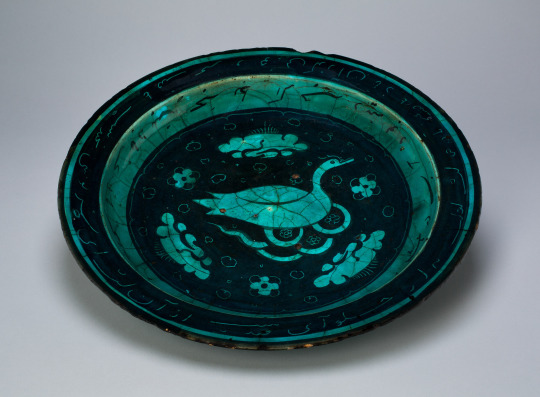
Inscribed Bowl with a Duck
Iran, Timurid dynasty (1370–1507), Late 15th century
The rule of the Timurids (1307-1507) brought increased economic and artistic interaction between Iran and China, and the ceramics produced during this time are strong examples of this exchange. This bowl has been attributed to the latter part of the Timurid dynasty and has also been referred to as Kubachi ware. Kubachi ware refers to a group of ceramics found in the town of Kubachi, which is located in modern-day Russia. Despite their place of discovery, these ceramics were not necessarily produced in Kubachi. Rather, they were most likely crafted at other centers known for their artistic production during the medieval period.
78 notes
·
View notes
Text
CHILDREN OF DESPINA HATUN

………. Hatun ( unknown name ) - Married Damad Ebu Bekir Mirza, son of Miranshah Mirza during or after Bayezid's captivity.
Pasa Melek Hatun - Married Damad Emir Celaluddin Islam son of Emir Şemseddin Mehmed; one of Timur's generals during or after Bayezid's captivity.
Oruz Hatun - Married an unknown man.
Oruz had a daughter named Ayse Hatun.
#geology#mariaoliveralazarevic#Oliverahatun#DespinaHatun#Princessmariaoliveralazarevic#Mariahatun#Hatun#Sultana#LazarevicDynasty#medievalserbia#royalife#oliverdespina#Milevaolivera#princess#Despina Hatun#Olivera Despina#Olivera Hatun#Oruz hatun#Oruzhatun#Pasamelekhatun#Pasa Melek Hatun#Bayezid I#Bayezid The Thunderbolt#Yildirim Bayezid#Timur#Timurid Dynasty#House of Osman#ottoman empire#Ottoman#Battle of Ankara
2 notes
·
View notes
Text

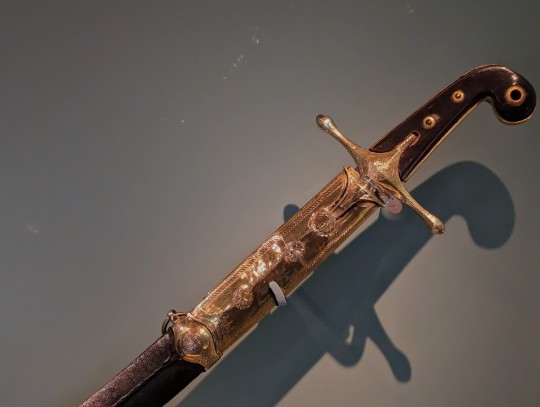
Sword from the Mughal Empire dated to 1803 on display at the National War Museum in Edinburgh Castle, Scotland
This sword was presented to Colonel Sir John Macdonald by the Mughal Emperor Shah Alam II. Colonel Macdonald was prominent in the victory of British Imperial Forces in the Second Anglo-Maratha War (1803 - 1805). An inscription records the presentation of the sword to Macdonald in the aftermath of the Battle of Laswari. This gift was tactical as it was one of the gifts made by Shah Alam II to re-establish an alliance with the British following his neutral stance in the conflict. The sword was bequethed to the National Museums of Scotland in 1944 by Macdonald's descendants.
Photographs taken by myself 2023
#sword#art#mughal empire#indian#india#19th century#military history#babur#timurid dynasty#national war museum#edinburgh#barbucomedie
1 note
·
View note
Text
Height headcanons
Not reflective of average height in the population for the most part. I guess. I don’t really care tbh
From shortest to tallest:
Golden Horde 165
Indonesia 167
Yuan 170
Ilkhanate 172
Mongolia 174
Timurid Empire 175
Kyrgyzstan 176
Kazakhstan 177
Gokturk Empire 177
(Blue Horde) 178
Uzbekistan 180
Chagatai (Khanate) 180
Turkey 181
Serbia 182
Netherlands 185
Russia bear size
#hetalia#aph mongolia#aph russia#hws indonesia#damn i should tag everyone??#aph turkey#aph netherlands#oc kazakhstan#oc uzbekistan#oc kyrgyzstan#oc golden horde#oc yuan dynasty#oc chagatai khanate#oc timurid empire#oc ilkhanate#oc gokturk empire#my headcanon#this is less reflective of how tall they are and more about how tall they are in comparison to the other characters#oc blue horde#aph serbia
20 notes
·
View notes
Text

Bukharan Jewish boots from Samarkand, Uzbekistan, ca. late 19th century
Many Samarkand Jews describe themselves as indigenous to the region, having arrived prior to the advent of Islam, and long before the Uzbek dynasts conquered the territory. In 1168, renowned medieval Jewish traveler Benjamin of Tudela wrote that 50,000 "Israelites" resided in Samarkand, among them "very wise and rich men." In the 14th century, many Persian Jews were welcomed by Tamerlane, the great Turkic warlord and founder of the Timurid dynasty, to boost trade and production in materials which were weaved and dyed. Thus, Samarkand, the city Tamerlane adorned as his capitol, became a major Bukharan Jewish center.
280 notes
·
View notes
Photo

The Empire of Timur the Lame, c. 1404 CE
A map illustrating the empire and campaigns of Timur (from the Chagatai word for iron) at its biggest extent before his death in 1405. Timur the Lame (Timur-i Leng from Persian, Tamerlane as it had evolved in English or Timūr Gurkānī, son-in-law following his marriage into Genghis Khan's family) was a 14th-century (1336 – 1405) Muslim conqueror of a Turco-Mongol descent who, at the peak of his Central Asian Timurid Empire, had defeated the major powers of the day - the Mamluks, Ottomans, the Sultanate of Delhi, and the Golden Horde and invaded, among others, Persia, Mesopotamia, Russia, Georgia, India, Syria, and Turkey. After his death preparing to invade the Ming Dynasty of China, the empire, which was never more than an expression of his personal ambition and dominance, quickly fell into disputes and civil wars and crumbled.
Image by Simeon Netchev
83 notes
·
View notes
Photo

The Shibanid (Shaybanid) Conquests, 1500-1510.
by u/Swordrist
This is my attempt at covering an underapreciated area of history which gets next-to no coverage on the internet. Here's some historical context for those uneducated about the region's history:
Grandson of the former Uzbek Khan, Abulkhayr, Muhammad Shibani (or Shaybani) was a member of the clan labeled in modern historiography as the Abulkhayrids, who were one of the numerous tribes which were descended from Chingis Khan through Jochi's son, Shiban, hence the label 'Shibanid' which is used not only in relation to the Abulkhayrids who ruled over Bukhara but also for the Arabshahids, bitter rivals of the Abulkhayrids who would rule Khwaresm after Muhammad Shibani's death and for the ruling Shibanid dynasty of the Sibir Khanate.
After his grandfather's death in 1468, Shibani's father, Shah Budaq failed to maintain Abulkhayr's vast polity in the Dasht i-Qipchak, as the tribes elected instead the Arabshahid Yadigar Khan. Shah Budaq was killed by the Khan of Sibir and Shibani was forced to flee south to the Syr Darya region when the Kazakhs returned and proclaimed their leader, Janibek, Khan. Shibani became a mercenary, serving both the Timurid and their Moghul enemies in their wars over the eastern peripheries of Transoxiana. After the crushing defeat of the Timurid Sultan Ahmed Mirza, Shibani succeeded in attracting a significant following of Uzbeks which formed the powerbase from he launched his conquests.
Emerging from Sighnaq in 1499, Muhammad Shibani captured Bukhara and Samarkand in 1500. In the same year he defeated an attempt by Babur (founder of the Mughal Empire) to take Samarkand. Over the course of the next six years, Shibani and the Uzbek Sultans conquered Tashkent, Ferghana, Khwarezm and the mountainous Pamir and Badakhshan areas. In 1506, he crossed the Amu-Darya and captured Balkh. The Timurid Sultan of Herat, Husayn Bayqara moved against him however died en-route and his two squabbling sons were defeated and killed. The following year he crossed the Amu-Darya again, this time vanquishing the Timurids of Herat and Jam and subjugating the entirety of Khorasan east of Astarabad. In 1508, he raided as far south as Kerman and Kandahar, however he moved back North and launched two campaigns against the Kazakhs, but the third one launched in 1510 ended in his defeat and retreat to Samarkand at the hands of Qasim Sultan.
The Abulkhayrid conquests heralded a mass migration of over 300 000 Uzbeks to the settled regions of Central Asia from the Dasht i-Qipchak. They heralded the return of Chingissid political tradition and structures and the end of the Persianate Timurid polities which had dominated the region for the last century. It forever after changed the demographic of the region. His reign was also the last time Transoxiana was closely linked with Khorasan, as following the shiite Safavid conquests the divide between the two regions would grow into a permanent one.
In 1510, Shibani faced his end when he moved to face Ismail Safavid, who was making moves on Khorasan. Lacking the support of the Abulkhayrid Sultans, who blamed him for their defeat against the Kazakhs earlier that year, he faced Ismail anyway, where he was defeated, killed and turned into a drinking cup.
Shibani's death caused a complete reversal of the Abulkhayrid fortunes. Khorasan and the rest of his empire fell under Safavid dominion. However in Khwaresm, Sultan Budaq's old rivals the Arabshahids expelled the qizilbash and founded their own Khanate, based first in Urgench and then Khiva. In Transoxiana, Babur lost the support of the populace when he announced his conversion to Shiism and his loyalty to Shah Ismail, which allowed the Abulkhayrids to rally behind Shibani's nephew, Ubaydullah Khan and expel the Qizilbash. Nonetheless, the Abulkhayrids would never again hold as much power as they briefly did when led by Muhammad Shibani Khan.
39 notes
·
View notes
Text
The Fire-Circle Tantra | Moth 8 | Author Unclear
The one known extant copy of this in Western Europe was stolen from the British Library in 1892. One Harvey Hattington confessed to the crime and claimed to have eaten it, with butter and garlic, in a moment of ungovernable whimsy.
Herein the Great Hooded Princes are shown beseeching the Wood to rise and devour an invading Timurid army. The 'Dapple-King', the 'Honey-Tree' and the 'Sea-Twins' all deny their request, until they enlist the help of a burrowing secret-keeper...
Armed with blackmail material from the 'burrowing secret-keeper', the Great Hooded Princes petition the powers of the Wood for a second time, and are successful. One quarter of the Timurid army is devoured by bees, one quarter drowns themselves, and one quarter 'disrobe themselves until nothing remains.'
I feel that the most important question here is: who are each of these characters? The Dapple-King is most likely to be the Moth, the Honey-Tree is almost certainly the Malachite/the Ring-Yew, and the Sea-Twins are the Witch-and-Sister, or the Sister-and-Witch. The Dapple-King is identifiable not by means of having heard the name before, but of what happens in the third paragraph - one quarter "disrobe themselves until nothing remains." This is identifiable as the shedding that those affiliated with the Moth undergo to Ascend - and thus, as aspected with the Moth in the moment of death. Additionally, there is the 'burrowing secret-keeper', who can only be the Velvet, associated with secrets and, in their very occasional depictions, takes the form of a mole.
As amusing as the thought of the Velvet having blackmail on the rest of their fellow Wood-Hours, the important question to me is: who are the Great-Hooded Princes? What are the Timurids? As much as I search, I have only seen the Timurids mentioned in this specific Tantra, and the Great-Hooded Princes I feel I have seen before.
Ah, yes. In the Twin-Serpent Tantra, and in the One Hundred and Eight - I have read the former, but not the latter, and it is since lost to me. I will keep an eye out for another copy.
In the Twin-Serpent Tantra (Knock 8 | Author Unclear), it describes the Great-Hooded Princes are described as "a dynasty of unclear origin", made up of 54 individuals, who existed in a History secret to our own. Having learnt of their destined death in that History, they escaped by means of the Mother of Ants (source: One Hundred and Eight | Scale 4 | Author: Eva Dewulf) into a different History in which they still live, and met the alternate versions of themselves, which they joined to become a hundred and eight. Hence the names of the Twin-Serpent Tantra and the One Hundred and Eight.
This is as much detail as can truly be gathered about one of the Histories' civilisations, however I feel it is truly informative - the Great-Hooded Princes are truly powerful Knock-Long, whose dynasty stands strong in another History. I originally read a replication of the Fire-Circle Tantra because I had heard from the Librarian that it was related to the Moth, however this is more fascinating than I had expected, and I'm glad to have read it.
#cultist simulator#book report#book: the fire-circle tantra#aspect: moth#weather factory#book: twin-serpent tantra#book: one hundred and eight
5 notes
·
View notes
Text

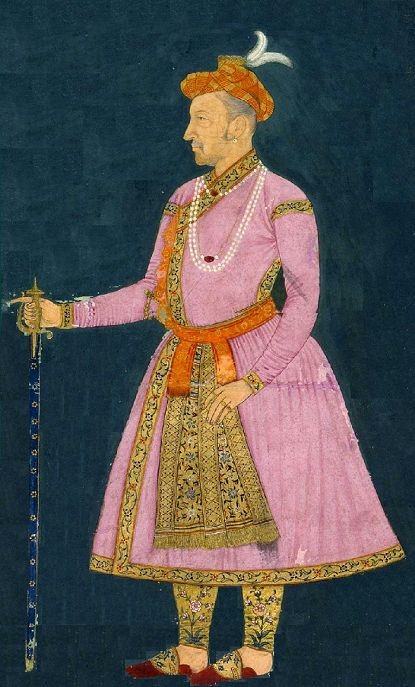
often the Mughal Emperors are shown with a ethnic look of Aryans/Central Asians but this depiction has many loop holes.
Mughals were claimed to have roots from Persian Mughals of Turkic-Mongol region. Even they have been risen from Timurid Dynasty hailing from Central Asia.
They had a more of Mongolian face cut.
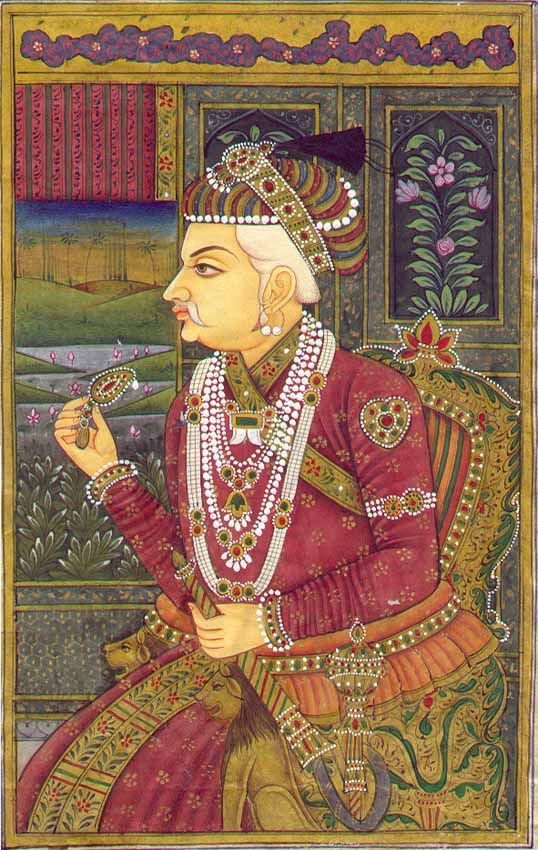
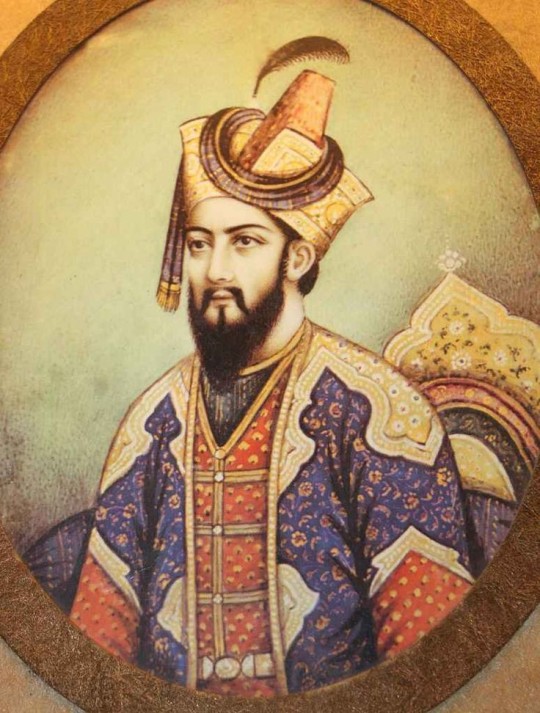
13 notes
·
View notes
Text
7 UNESCO Heritage Sites of India by Bright Holidays
Introduction:
India is a country with a lot of different cultures, a long and interesting history, and beautiful natural scenery. It has many places that tourists from all over the world find interesting. Whether it’s amazing buildings or places of worship, India’s tourist spots provide a wide range of experiences. Here, Bright Holidays presents a curated list of seven UNESCO World Heritage sites that encapsulate India’s unique charm.
UNESCO World Heritage Sites of India:
1. Taj Mahal:
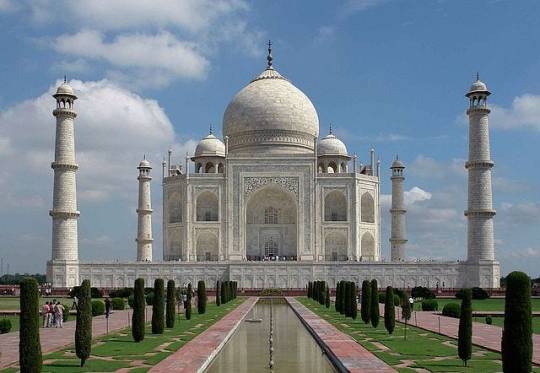
Undoubtedly one of the most iconic symbols of India, the Taj Mahal stands as a testament to eternal love. Located in Agra, Uttar Pradesh, this pristine white marble mausoleum was commissioned by the Mughal Emperor Shah Jahan in memory of his beloved wife, Mumtaz Mahal. Its intricate architecture, intricate carvings, and the mesmerizing play of light during sunrise and sunset make the Taj Mahal a must-visit destination for any traveller.
2. Red Fort:

Situated in the heart of Delhi, the Red Fort, or Lal Qila, is a historic fortress that served as the main residence for Mughal emperors for nearly 200 years. Constructed using red sandstone, the fort is a remarkable blend of Persian, Timurid, and Indian architectural styles. The Red Fort hosts the annual Independence Day celebrations of India on August 15th.
3. Champaner-Pavagadh Archaeological Park:

Located in Gujarat, this UNESCO World Heritage site encompasses the archaeological remnants of a medieval capital and the hill fortress of Pavagadh. Recognized in 2004, it showcases a harmonious blend of Hindu-Muslim architecture and culture. Highlights include the Jami Masjid and intricately carved temples on Pavagadh Hill, offering a glimpse into the historical and cultural significance of this unique site.
4. Qutab Minar:

Delhi, with its rich history, is home to the Qutab Minar, the tallest brick minaret in the world. Built-in the 12th century, the Qutab Minar complex includes various historical structures and ruins, such as the Iron Pillar of Delhi. The intricate carvings on the minaret narrate the history of its construction and the dynasties that ruled over Delhi.
5. Konark Sun Temple:

Located in the state of Odisha, the Konark Sun Temple is a mesmerizing architectural marvel dedicated to the sun god Surya. Built in the 13th century, the temple is renowned for its intricate stone carvings that depict scenes from daily life, mythology, and the celestial world. The temple’s chariot-shaped design and the precision of its artwork make it a UNESCO World Heritage Site.
6. Ajanta Caves:

The Ajanta Caves, located in India, are a fascinating historical site with a lot to offer. These caves are known for their ancient rock-cut architecture and beautiful paintings that depict scenes from the life of Buddha. Visiting the Ajanta Caves provides a unique and captivating experience, allowing you to explore the rich cultural and artistic heritage of India.
7. Ellora Caves:

In the western state of Maharashtra, the Ellora Caves comprise a series of rock-cut temples representing Hindu, Buddhist, and Jain traditions. Carved between the 6th and 10th centuries, the caves showcase the artistic and architectural prowess of ancient India. The Kailasa Temple, dedicated to Lord Shiva, is a highlight, featuring a monolithic structure carved from a single piece of rock.
Conclusion:
Embark on a journey through these seven iconic UNESCO World Heritage Sites, each narrating a unique story of India’s history, cultural diversity, and architectural brilliance. As you explore the Taj Mahal, Red Fort, Golden Temple, Qutab Minar, Konark Sun Temple, Ajanta Caves, and Ellora Caves, witness the timeless beauty that invites you to discover the magic within India’s borders. Bright Holidays invites you to embrace the richness of India’s past and present, offering a profound and unforgettable travel experience amidst these UNESCO treasures.
About Us:
Bright Holidays proudly holds the title of the best tour and travel agency in Ahmedabad, offering unparalleled travel experiences that cater to your every wanderlust desire. Whether you’re dreaming of international adventures, exploring captivating domestic destinations, or seeking personalized travel itineraries, our dedicated team is committed to creating seamless, remarkable journeys that transform your dreams into unforgettable memories.
3 notes
·
View notes
Photo
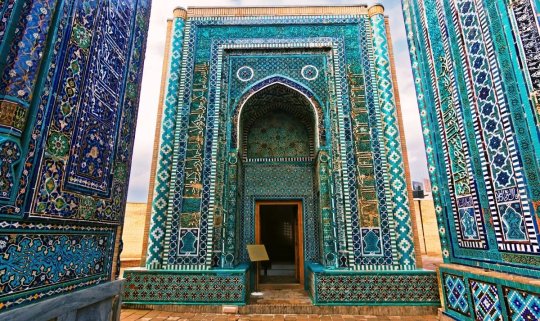

~ “The Shah-i-Zinda complex, with the meaning "The Living King", is located in the north-east of Samarkand. As a necropolis, it consists of a number of mausoleums and other buildings of sacred significance, many of which date from the 11th to 15th centuries, while others date from the 19th century. In relation to the former time frame, it is one of the most famous burial sites of the Timurid dynasty. The religious significance of the Shah-i-Zinde lies in the fact that some of its elements represent the oldest Muslim buildings in Samarkand, and its ornamental detail is one of the most outstanding examples of Islamic art in Central Asia. The naming of the tomb complex is certainly related to the activities of Qutham ibn Abbas, who was the cousin of the Prophet Muhammad and was instrumental in the Islamization of the region (by which we mean present-day Uzbekistan). The martyred Qutham is associated with several legends, and is himself buried in the complex. “ ~
6 notes
·
View notes
Text
Unleash the Power of the Winds of Change Expansion in Europa Universalis IV
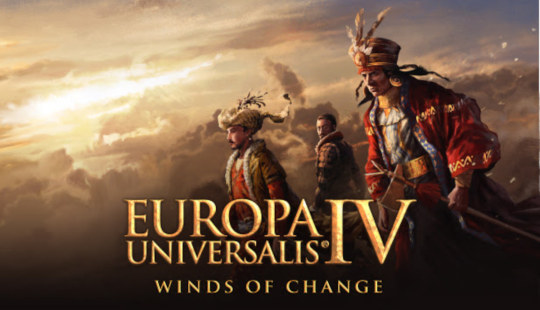
Winds of Change expansion launches more history for nations in Europa Universalis IV for the Linux, Mac, and Windows PC game. Thanks to the creative minds at Paradox Development Studio and Paradox Tinto for their amazing work. Available now on Steam, GOG, and Humble Store.
Exciting news for all history and strategy fans, Europa Universalis IV just launched a new game expansion, Winds of Change. It's also packed with updates and fresh content that will enhance your experience on Linux.
Winds of Change gives a fresh look to over a dozen nations. While adding rich historical details that span from the Aztec Empire of 15th century Mexico to the trade-driven republics of Venice and the Netherlands. The Winds of Change expansion dives deep into history, due to bring each nation's unique story to life.
Europa Universalis IV: Winds of Change expansion Trailer
youtube
Here’s what’s new:
Major American Nations: The Aztecs, Maya, and Inca are seriously beefed up. The Aztecs now have features that emphasize their warfare and sacrificial rituals. The Maya can now unite into a single powerful kingdom, and the Inca see enhanced royal authority. Plus, there’s also a nice twist where these nations can even launch invasions into the Old World.
Major Trading Nations: The Netherlands and Venice aren't left out. There's more to explore about the Dutch Republic and the Venetian Renaissance. Ever heard of the Glorious Revolution where the Dutch and British crowns united? The Winds of Change expansion has that too!
Gunpowder Empires: The Timurid Empire can now choose to stick with Persian traditions or go back to its roots with a life of plunder. The Mughal Empire gets new strategies to unite India. Not to mention updates to the Central Asian Hordes, which add a unique flavor to the Tatar, Mongol, and Moghul Khanates.
Central Europe: Austria, Hungary, and Bohemia also get major updates. Since they can shape the Holy Roman Empire to better reflect their strategies, and there’s even an option in Winds of Change for Austria and Hungary to become a dual monarchy in this expansion.
Major Formable European Nations and Minor Orthodox Empires: There are new alternate history options for forming nations like Germany and Italy. Plus, the smaller Orthodox kingdoms around the Black Sea, like Theodoro and Trebizond. These also have new options to expand and thrive.
Hisn Kayfa and Hormuz/Oman: These smaller nations now have changes with unique mission trees. Hisn Kayfa, continuing the legacy of the Ayyubid dynasty, and the trading giants Hormuz and Oman aim to control the Middle East.
The Changes:
This Winds of Change expansion really brings a lot to the table. Since it enhances the historical depth and offering new ways to play. Whether you’re into expanding an empire, exploring alternate histories, or just enjoying rich historical content, the expansion promises something exciting for everyone.
Europa Universalis IV: Winds of Change game expansion is available now on Steam, GOG, and Humble Store — don’t miss out on the action. Priced at $19.99 USD / £16.75 / 19,99€. While offering support for Linux, Mac, and Windows PC.
#europa universalis iv#winds of change#expansion#paradox development studio#paradox tinto#clausewitz engine#ubuntu#mac#windows#pc#Youtube#linux#gaming news
0 notes
Text
A Brief History of Central Asia
The Samanids-7th to 10th Century
In her book, Russia and Central Asia: Coexistence, Conquest, Convergence, Shoshana Keller wrote that “if you look at a map, Central Asia is at the center of everything but is itself nowhere.” I think that’s a pretty useful way of thinking about this region. It is surrounded by Russia, China, Iran, and India and so is easy to dismiss, but was also the wealthy center of the Silk Road, the center Islamic intellectual and religious life, and home to the great conquerors such as Chinggis Khan and Timur.
When thinking about Central Asia, I’ve seen their history divided into six different time blocks: the pre-Islamic , the Arab period, the Mongol period, the Timurid period, the Uzbek period, and the Russian period.
Between the 7th and 10th century, which can be thought of as the pre-Islamic age, Central Asia was home to mostly nomadic Iranian steppe peoples, known as Scythians. Historians love to create a deep divide between nomads and settled people, but in Central Asia it’s almost impossible to do that because you had nomads who would settle for periods and then move again or what historians call semi-settled nomads, farmers who settled until it was no longer profitable to do so. At this time, the region was mostly Iranian nomads, but there was a growing Chinese and Tibet presence as well.
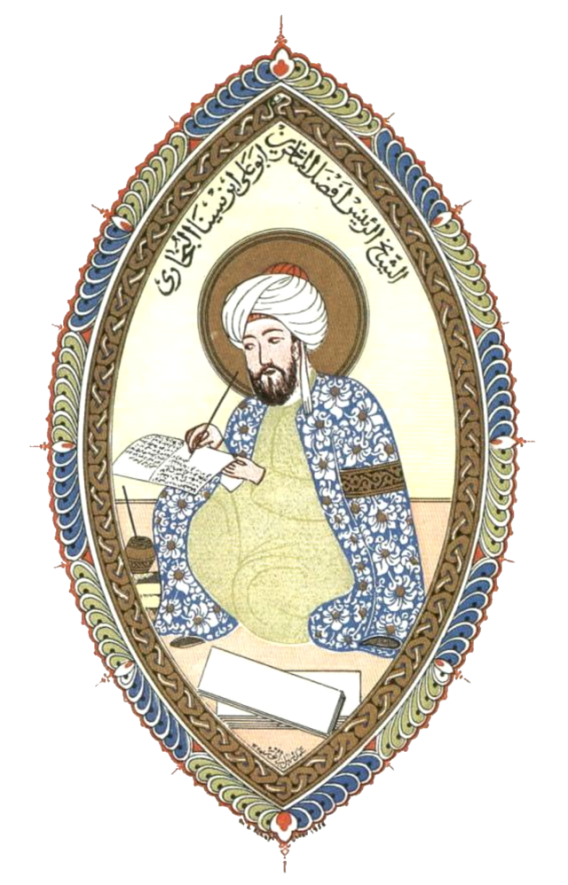
Avicenna
[Image Description: A hand drawn and inked picture of a man in a white turban writing on a white scroll. The man has a black beard and mustache. He is wearing a yellow dress shirt and a blue robe with white flowers. He is sitting on a tan floor. He is holding a brown stylus. On his left there is a brown pot with a brown stylus inside. He is framed within an oval border of blue and white peacock feathers]
The Arabs invaded in the 8th century CE, defeating the Chinese army at the battle of Taraz in 751, ending the Chinese presence in Central Asia for a millennium and enfolding Central Asia into the Abbasid empire. The Arabs brought Islam with and encouraged conversions, while leaving political power to local forces. Eventually, the Samanids grew to prominence and became an autonomous power. During the Samanids reign, Bukhara became a center of Muslim learning and home to many famous Islamic scholars such as Avicenna and Abu Rayahn al-Biruni.
At the same time, there was a massive migration of Turkic peoples into Central Asia creating multiple dynasties such as the Qarakhanids, the first Turkic-Muslim dynasty in Central Asia, the Ghaznavids the dynasty centered in Ghazna (modern day Afghanistan), founded by a Samanid military commander, and the Saljuqids, a Turkic dynasty the would rule over much of Western Asia during the 11th and 12th century. The Samanids would fight with the Qarakhanids, but also recruited Turks into their armies since they were considered to be superior fighters. This enabled them to rise to prominence and take over the region by the end of the 10th century Many converted to Islam, the most famous being the conversion of the Qarakhanid ruler, Satuq Bughra Khan.
The three Turkic dynasties divided the Samanid Empire amongst themselves with the Saljuqs (soul-jook) gaining control by the late 1080s, creating a new dynasty of kings in Khorezm (cor-riz-em) Eventually the Turks would be worked into the Muslim narrative by making them the descendants of Yafith (also known as Japheth, one of Noah’s three sons.)
Chinggis Khan and Timur-1200-1500s
By the 1200s, Central Asia was facing a new foe: Chinggis Khan and the Mongols. While Chinggis’ main foe was China, he quickly realized that Central Asia was too powerful to leave alone. So, in 1219, he led an invasion and eventually conquered the region When Chinggis Khan died, he divided his territory amongst his sons with Chaghatay, Chinggis’ second oldest son, receiving the steppe lands to the north of sedentary Central Asia. Chaghatay’s son would expand their reach to most of Transoxiana, which includes parts of modern day Uzbekistan, Tajikistan, southern Kyrgyzstan, and southwest Kazakhstan. Mongol rule would see Islam spread throughout Central Asia and the rise of the Sufis, who would remain powerful after the Mongols were long gone.
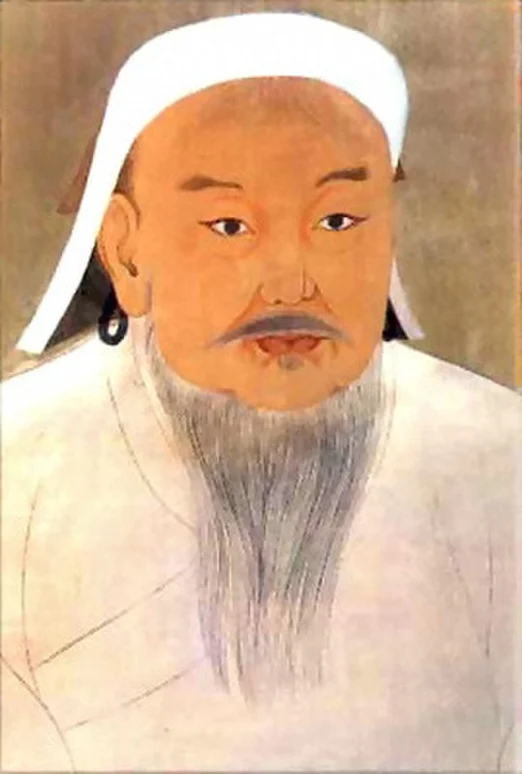
Chinggis Khan
[Image Description: A hand painted picture of a older man with Mongolian features. He has wide black eyes, a small nose, a grey mustache, and a long grey, wispy beard. He is wearing a white hat and white robe.]
The Mongol Empire shattered after three generations and the remaining fragments formed their own independent dynasties. Within Central Asia, they would build their khanates around key cities such as Bukhara, Khiva, and Kokand. One such powerful Turkic lord was Timur.
Timur’s family seems to have taken part in the Mongol’s invasion of Central Asia and solidified their power in the city Kish, south of Samarkand. By 1370, Timur became the most powerful man in Central Asia, but since rulers required Chinggisid lineage, he employed a puppet on the throne. Timur also married into the Mongol royal family and established Samarkand as his capital. Timur will always be known for his conquests and military campaigns, but Central Asia will remember the increased trade, the beautification of Samarkand, and the explosion of architecture.
When Timur died, his dynasty ruled Central Asia, Afghanistan, and Persia. His descendants known as the Timurids became dedicated patrons of the arts and sciences, (also known as the Timurid Renaissance), the profound rise of the Sufis, and establishing a model of governance that inspired governments in Uzbek Central Asia, Mughal India, Safavid Iran, and the Ottoman Empire. The Timurid state would last until the 16th century when a new race of people migrated to Central Asia: the Uzbeks.
The Uzbeks – the 1500-1700s
The Uzbek migration, the last great nomadic invasion, even though the region would continue to see mass migrations, occurred in the 1500s and created three famous khanates: Khiva, Bukhara, and Kokand.
Khiva was created when the old Khwarazm Empire (a native dynasty) was taken over by the Uzbek family the Arabshanids. The Arabshanids moved the capital to Khiva in the 1500s and established control over most of what is modern day Turkmenistan. Khiva would flourish until the 1540 and 1593 Bukharan invasions. They served as a Bukharan vassal state until the Nadir Shah invasion in the 1700s. They regained their independence under the Kongrat Dynasty in 1804 but would struggle with a Turkmen rebellion from 1855-67 when two to three Khans were killed.
The Bukharan Khanate was created when a group of Uzbeks, led by Muhammad Shibani Khan pushed Zahir al-Din Muhammad Babur out of his family’s home in Samarkand and into Afghanistan where he would invade India and create the Mughal Empire. The Shibani Khanate would rule from 1500-1599 before being taken over from the inside out by Toqay Timurids.
The Shibanids utilized the appanage system to govern: the appanage system relied on the senior member of the ruling family as the greatest amongst equals and divided the territory amongst other family members. Bukhara became the khanate’s capital, but they also ruled important cities such as Tashkent, Samarkand, and Balkh.
The Uzbeks were Sunni Muslims and that put them in conflict with the Shia Muslims the Safavid dynasty in Persia. This conflict expressed itself via a struggle over the Khurasan region. Shibani Khan himself would die in battle against the Safavids. As can be guessed, the appanage system was unstable and the Shibanids would undergo civil wars every time a ruler died. The Khanate also had to contend with conflicts with Kazakh warriors, the Safavids, and neighbor khanates such as Khiva.
In 1681, the Khivans invaded the Bukharan territory, took Bukhara itself and forced the Khan to step down. The Khan’s brother ascended the throne but struggled with rebellious amirs, who were slowly consolidating power into their hands. They assassinated several khans worsening internal crises while the region suffered several invasions from neighbors such as the Jungar Mongol invasion in 1723. This would spark what is known as the Barefoot Flight, a mass migration of Kazakh people into Bukharan territory.
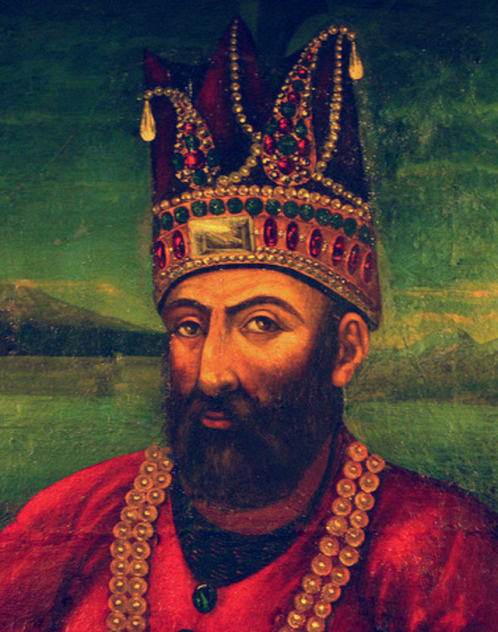
Nader Shah
[Image Description: A painted picture of a man in a large, golden and red felt grown. He has brown skin, a long mustache and beard, and a strong nose. he is wearing a red robe and a golden necklace. Behind him is a green sky, mountain, and lake.]
Things were made worst in 1736 when the Shibanid’s old enemies, the Safavids were defeated in Persia and replaced by Nadir Shah. While invading India, Nadir Shah forced Khiva and Bukhara to submit to his authority. When Nadir Shah died in 1747, Muhammad Rahim Bey, the man Nadir sent to Bukhara to keep order, killed the last Shibanid khan and took control himself, ending the Shibanid/Toqay-Timurid dynasty.
The Kokand Khanate was a creation of the Shibanid dynasty and originated in the Ferghana valley. The ruler Narbuta Bey negotiated trade deals with the Qing dynasty in China, and created a dynamic system of government that his sons Alim and Umar would take advantage of and create a golden age for Kokand.
The Kokand khanate established their legitimacy by modeling their government and society on Timurid society and even tried to trace their linage to the Timur family. While they were more centralized than the Bukharan Khanate, they were in no way a modern central state. Their system worked best when they could balance and play the needs of all their constituents against each other. Naturally, the Khanate began to fail when the khans could no longer manipulate their constituents effectively.
The Russians 1700-1900s
While internal divisions hurt Khanate rule, it was the Russians and Chinese who were tolling the death bells. It started in 1758 when China invaded Xinjiang, shocking Central Asian Muslims. The Kokand Khanate responded by agreeing to be a subordinate to the Qing dynasty, but no one seemed to define what that meant and that make their relationship rocky from the start. The Russians made several excursions into Central Asia, eying the Kazakh and Kyrgyz Steppes, and reaching out to various Khanates for alliances and vassalages.
The Central Asians, at first, saw more opportunities than dangers. They increased trade with China and Russia and thought they could play their neighbors against their rival khanates. In 1715, Khiva considered allying with Russia to defeat their neighboring Turkmen tribes, but Khiva executed the Russian diplomats instead. Russian established a militarized border known as the Orenburg line by the mid-eighteenth century. The Russian and Chinese invasions, combined with the Persian invasion in the 1700s, left Central Asia off-kilter and many people seems to turn to Sufis and ulama for guidance.
The Russian expansion was inspired by need for land and resources as much as it was inspired by British interference. What we now called the Great Game took place in Central Asia during the 18th and 19th century and trapped the Central Asians between two colonial powers. The Khanates tried to navigate the difficult times as best they could, but could not prevent Russia from taking all of Turkestan (most of modern day Central Asia) by 1895, leaving the Emirates of Khiva and Bukhara as loosely independent entities whose loyalty was to Russia.
References:
For Prophet and Tsar: Islam and Empire in Russia and Central Asia by Robert D. Crews Published by Harvard University Press, 2006
The Rise and Fall of Khoqand: Central Asia in the Global Age 1709-1876 by Scott C. Levi Published by the University of Pittsburgh Press, 2017
The Bukharan Crisis: a Connected History of 18th Century Central Asia by Scott C. Levi Published by University of Pittsburgh Press, 2020
Tatar Empire: Kazan’s Muslims and the Making of Imperial Russia by Danielle Ross Published by Indiana University Press, 2020
Russia and Central Asia: Coexistence, Conquest, Coexistence by Shoshana Keller Published by University of Toronto Press, 2019
Russia’s Protectorates in Central Asia: Bukhara and Khiva, 1865-1924 by Seymour Becker, Published by RoutledgeCurzon, 2004
Tournament of Shadows: the Great Game and the Race for Empire in Central Asia by Karl E. Meyer and Shareen Blair Brysac Published by Basic Books, 1999
Russian Rule in Samarkand, 1868-1910: a Comparison with British India by Alexander Morrison, Published by OUP Oxford, 2008
#central asia#Central Asian history#Season 2: Central Asia#russian empire#russian colonialism#Spotify
0 notes
Text
More headcanons on Mongol Empire-Post Mongol Empire era:
I LOVE depicting Mongolia as a father and grandpa of many offpsring, and he did have many. So there were Golden Horde/Jochid Ulus (which was actually a combined force of Blue Horde and White Horde given to Jochi’s sons Batu and Orda, because Jochi died before Golden Horde was consolidated), Chagatai Khanate (of Chagatayids), Ilkhanate (of Hulagu), and Yuan (of Kublai). Now, rather than going with ‘Mongolia = Yuan’ like I used to, I decided to give Yuan its own personification. Why tho? For one, while Yuan’s territory did comprise of Mongolia proper and Kublai as its founder presented his state as core Mongol Empire (or, simply Mongol Empire) with his grandfather Chinggis Khan as its founder, sketchy things surrounded Kublai’s ascension as a Khagan; he was enthroned during a quriltai that was held not in Karakorum but in his own city Kaiping (in China), and it was without the votes of all four Chinggisid branches who at the time supported Kublai’s youngest brother Ariq Boke as a Khagan. All of this made his ascension illegal. What’s more, Kublai who was pretty much an usurper proclaimed himself as a ruler in a distinctly Chinese style and Yuan dynasty was established with all the legitimacy of a Chinese dynasty. Yuan therefore looked more like a breakaway/successor state just like the other Khanates than simply a continuation of the Mongol Empire that Chinggis Khan built. It stands to reason for me that I should make a distinction between Yuan and Mongolia then, since Mongolia the dude in my head represents the core of Mongols so he should be purely Mongolian with pure Mongol/nomadic characteristics. For legitimacy with the Mongolian side, Yuan would latch onto Mongolia and they would rule both China and Mongolia together. The link below is an interesting read of which I based my theory off on the separation between personifications of Mongolia and Yuan dynasty:
Besides, I just want funny family moments between Mongolia and his kids and grandkids, and the more the merrier!!
Golden Horde is a Hater and he’s so valid for it. He hates people and nothing he likes more than going to his mancave (of wide steppe) and ignoring all other kinds of existence including his own siblings by Mongolia, though he of course is loyal to his princes and princesses and would do everything for them. His rivalry with Chagatai (Khanate) reflects Jochi’s with Chagatai. Also despises Ilkhanate bc they have feuds over territories and trades. Only slightly more okay with Yuan bc Yuan is really far away and cannot bother him much though he still doesn’t want to acknowledge him because why should he. Perpetual virgin until he met chaotic deranged dumbass Timurid. Anyway, he’s a child between Mongolia and Polovtsy/Qipchak. The Polovtsy were Turkic nomads whom the Jochids subjugated and entered into their ranks (or got scattered all over the area as they fled the Mongols). They had a confederate before the Mongols came.
Mongolia: “Horde, now be good and have dinner together with me and your brothers!”
Horde: “Fuck you all now let me go back to my mancave.”
Mongolia: *spanks Horde*
Maybe I should give Blue Horde and White Horde personifications too and they are the ones who do the actual ruling while the most Golden Horde does is frolicking around, bullying little hare Russia, or being fussed over by his princesses. Anyway, they love to braid his long hair like a maiden and put beads and rings on it.
Russia sometimes mistakes Horde as a Mongol Princess because of it and Horde is so NOT amused. Cue Horde chasing Russia around.
Russia and Horde coincidentally bond over not liking studying and reading, and as kids they were illiterate. Their princes/advisors were this 👌 close to giving up teaching them to read. Horde says he’s an all powerful warrior of the steppe and he already has everything he wants and needs so why should he even study?? Meh.
At some point Horde also tried to shoot Russia’s cat because he was curious if it tasted good and that was the first time Russia smacked him. Horde was secretly impressed because apparently little hare could pack up a good punch.
Chagatai is rivals with Horde and he’s salty because his desire to make daddy Mongolia happy by besting that fucker-with-his illegitimate-Khans Horde results in Mongolia disinheriting their respective khans from the throne of Khagan altogether through Chinggis Khan. Eventually, Chagatai becomes estranged much like Horde did. His personality is serious and ruthless to a fault. Chagatai is a child of Mongolia and Qara-Khitai, who was a Khitan-ruled state in Central Asia. Khitans were a nomadic group related to Mongols as they were all similarly descended from Xianbei. Qara-Khitai however wasn’t purely Khitan because most of its subjects were Central Asian Turco-Persian Muslims under Karakhanids who then became vassal to the Khitans. Therefore by characteristics Chagatai was very much Central Asian and not Khitan… maybe Karakhanid was his actual second dad? Only Mongolia knows.
Ilkhanate is the child of Mongolia and Khwarazmian Empire (another Turco-Persian state, also both Karakhanid and Khwarezmia were descendants of Gokturks). His relationship to Mongolia is second to best, but even in time he’s more concerned with his own gains than being a filial son to Mongolia. He’s an excitable dude who’s also a wildman.
Yuan (Monchu love(hate)child) is possibly Mongolia’s favorite kid because he’s best behaved to him (including paying homage to him unlike his other hopeless brats). Has an ultra high self esteem because he’s most favored by Mongolia and because he lords over the mighty China. Lots wholesome moments between daddy Mongolia and Yuan with China totally NOT having a good time.
Yuan: “I am Great Yuan, bow down to me and my Father!!”
Horde, Chagatai, Ilkhanate: *leave*
Yuan: “No, come back here!!!!”
Except for China, Mongolia obliterated his kids’ second dads they are no more 💔 maybe he tried to do that to China too (like with Song whom Kublai subjugated) but too bad for him, China is eternal.
Yes, basically the other dads of Mongolia’s brats were the countries he subjugated and took over. He killed their personifications and gave the territories to his own.
I decided to not make Timurid a direct descendant of Mongolia, however he kinda larps as Mongol Empire following Tamerlane’s massive ambition (lol good luck). He also got important territory off Chagatai and he did it by cannibalizing parts of him (!!!). Timurid is a simpleton brute with singleminded focus who’s also a poet of many vulgar poems depicting his lover Horde. Also, I guess by the time Moghulistan happened there would be another personification in place (which means Chagatai would be dead by then) but idk yet.
Initially Horde and Timurid had it SO good but Horde had to betray him following the orders of his prince Tokhtamysh, and it made Timurid so livid he got batshit insane as if possessed. He chased after Horde and burnt his important cities when he couldn’t find him, further weakening Horde when he was already weakened from civil war and conflicts. They met one last time shortly before Horde’s death, though Horde’s death wasn’t actually by Timurid’s hands.
Mongolia finds it quite tragic that he lives on while his kids and many descendants couldn’t, but such is fate. He wouldn’t actually want to switch places with them tho (for nationverses, only one’s own survival really matters), but it would be nice to have his large family around him. He would love having his dining table brimming full with his offspring and relatives during Tsagaan Sar. Mongolia misses them sometimes even though their relationship wasn’t always so good.
Mongolia himself isn’t always a good father, and while he’s pretty attentive to his kids (the ones he had in the past or the ones he has had pretty recently) he’s an emotionally independent person and likes to encourage his brats to be independent sooner. Therefore, sometimes he can be quite neglectful, and it is even more the case these days though part of it is because he himself cannot support them much in many ways. Not saying he’s a 100% chill parent though, because like any kind of patriarch he expects and could demand proper filial piety from his brats, but these days perhaps following the pattern of chill urbanized fathers who are more of good friends to their kids than just reigning patriarchs, Mongolia is much more chill (in an egalitarian sense) with his remaining kids and relatives. Spanking your kids is bad, so he no longer does it.
#hetalia#aph mongolia#hws russia#aph china#hws mongolia#aph russia#hws china#oc golden horde#oc timurid empire#hws golden horde#hws timurid empire#oc chagatai khanate#oc ilkhanate#oc yuan dynasty#aph#hws#my headcanon
28 notes
·
View notes
Text
The Mongol Empire was one of the largest and most powerful empires in world history, stretching from Eastern Europe to Central Asia and China. Its impact on world history was significant and far-reaching, shaping the political, cultural, and economic landscape of the regions it conquered. Here are some of the major impacts of the Mongol Empire:
1. Expansion and Conquest: The Mongol Empire was founded by Genghis Khan in the early 13th century and quickly expanded through a series of successful military campaigns. The Mongols conquered vast territories, including much of China, Central Asia, and Eastern Europe, and established one of the largest empires in history.
2. Trade and Commerce: The Mongols facilitated trade and commerce across their empire, creating a vast network of trade routes known as the Silk Road. This allowed for the exchange of goods, ideas, and technologies between different regions, contributing to the growth of commerce and cultural exchange.
3. Cultural Exchange: The Mongols were known for their religious tolerance and willingness to adopt the customs and traditions of the regions they conquered. This led to a significant cultural exchange between different regions, with the spread of ideas and technologies across the empire.
4. Military Tactics: The Mongols were known for their superior military tactics, including their use of horseback archery and siege warfare. These tactics were influential and adopted by other armies throughout history.
5. Legacy: The Mongol Empire had a lasting impact on the political and cultural landscape of the regions it conquered. The empire paved the way for the rise of the Timurid Empire in Central Asia, the Yuan Dynasty in China, and the Golden Horde in Eastern Europe. It also left a lasting legacy in the form of the Mongolian language, culture, and traditions.
Overall, the Mongol Empire had a significant impact on world history, shaping the political, cultural, and economic landscape of the regions it conquered and leaving a lasting legacy that is still felt today.
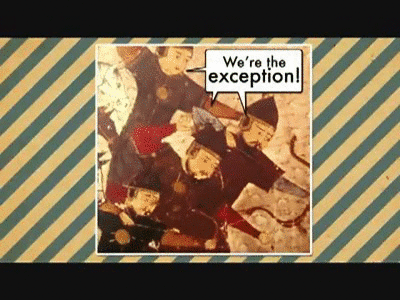
0 notes
Link
0 notes